The Fountain "Funtanassa"
To talk about this fountain, we need to go back a long way, to 979 A.D., when a group of peasants, after the threat of the Saracens had ended and they had taken refuge in the 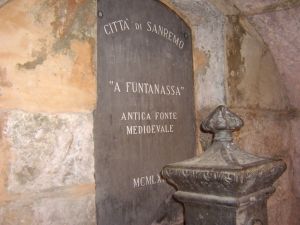 hinterland, asked and obtained permission from Bishop Teodolfo to settle on the Pliocene hill known as "Costa" in exchange for a percentage of the agricultural produce they would receive.
hinterland, asked and obtained permission from Bishop Teodolfo to settle on the Pliocene hill known as "Costa" in exchange for a percentage of the agricultural produce they would receive. 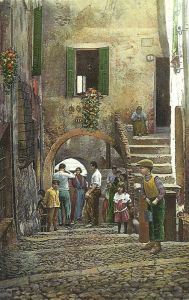 Here they began to build houses around a fortified nucleus: the 'Castrum'. The hill was easily defensible and the houses, built one next to the other without interruption, formed real walls in which there were gates at strategic points for access to and from the city.
Here they began to build houses around a fortified nucleus: the 'Castrum'. The hill was easily defensible and the houses, built one next to the other without interruption, formed real walls in which there were gates at strategic points for access to and from the city.
The problem of water, however, arose immediately because, even though the settlement had two streams, the San Francesco to the east and the San Romolo to the west, which flowed at the bottom of the two side valleys, they remained outside the walls and could not easily be reached to draw water from them.
The solution was found either by digging wells inside the city (several water veins run underground) or by building cisterns to collect and contain the water.
Among these cisterns, the most famous is the one located in what is now Via Romolo Moreno (formerly Via alla Costa), and called 'Funtanassa'.
Mentioned in some medieval documents, it is a tank that collects water from a small canal that runs inside the building above it. The water comes from rainwater dripping from the ground at a clay layer.
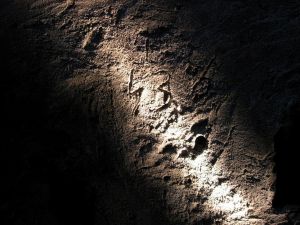 To date the Funtanassa, there is a date engraved on the plaster inside the building that contains it: 1436.
To date the Funtanassa, there is a date engraved on the plaster inside the building that contains it: 1436.
However, given that the entire structure of the Funtanassa is within the walls completed by Robert of Anjou, King of Naples and protector of the Guelphs of San Romolo in 1321, it is reasonable to assume that the cistern predates this date.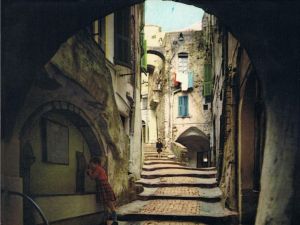 The cistern provided water both for domestic use and for watering animals, especially mules, which were used as beasts of burden.
The cistern provided water both for domestic use and for watering animals, especially mules, which were used as beasts of burden.
For this specific purpose, at the outer base of the cistern there was a basin, which we can still find depicted on some vintage postcards and which was removed around the middle of the last century, when animals were no longer used in the town. It was rectangular in shape, about 5 x 2 metres, made of large squared stone ashlars, with a barrel-vaulted roof.
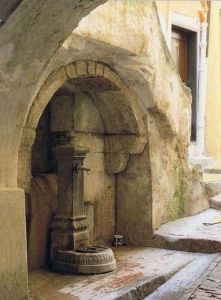 In place of the drinking trough, a small cast-iron fountain was placed, which is no longer functional.
In place of the drinking trough, a small cast-iron fountain was placed, which is no longer functional.
(For the characteristics of the internal cistern that fed the fountain see page 21 The Funtanassa cistern).




